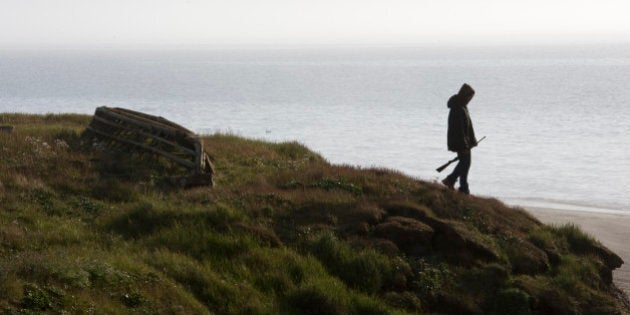
While I was growing up in a small village of about 250 people, I was abused by my father, my friends, and my older brother....My friends didn't want to hear what I went through. I didn't have anyone to talk to. I didn't trust anyone, even myself. I know what kids in Alaska are going through..
In a special commentary which was recently published in the Journal of Rural Mental Health, Senator Mark Begich shared the story of "Anna", a young girl from rural Alaska who had written about how she struggled with suicide and depression. A former mayor of Anchorage, Senator Begich is currently waging a tough reelection campaign as well as championing the Mental Health First Aid Act to expand mental health training across the country.
The need for this legislation is especially apparent in rural Alaska. According to the most recent statistics, suicide rates outside Alaska's main cities are four times the national average and among the highest in the world. In 2010 alone, the number of suicide in Alaska's Kuskokwim prompted state and local officials to mount an emergency response. Despite their efforts however, suicide rates in rural Alaska are still high. Though nationwide suicide rates tends to highest in people over eighty, it is the 20-29 year age group that seems most prone to suicide in Alaska.
Native groups are particularly vulnerable with a Alaskan Native committing suicide once every eight days. Young Alaskan Native males aged 15 to 24 are almost nine times more likely to commit suicide as all other U.S. males in that age group. Also, Alaskan Native women aged 15 to 24 are 15 times more likely to commit suicide than other U.S. women of that age. To try combating this trend, the Alaska Native Tribal Health Consortium launched a Suicide Prevention Initiative in 2009 to train counselors to help reduce the number of deaths but economic problems and isolation means that too many young people are still dying.
Veterans returning from a tour of duty overseas are also considered high-risk for suicide. The Department of Veterans Affairs (VA) reports that 22 veterans a day commit suicide and the Veterans Crisis Line has been established to help veterans at risk. The VA is also pioneering the use of videoconferencing and telehealth services to provide mental health care to people living too far from regular health services. Along with helping people in need, counseling is also available for families affected by suicide.
More needs to be done however. As Senator Begich notes in his article, "one consistent thing I see from my travels across rural Alaska is that more resources are needed to better understand this crisis and provide services to those in need in our communities." To help curb suicides and understand why these deaths are happening, Senator Begich has also introduced the Suicide Prevention Research Innovation Act (SPRINT) to gain funding for more research into mental illness and the causes of suicide nationwide.
The Mental Health First Aid Act, which he also introduced, is based on a similar initiative in Australia and has since been reproduced in other countries. Early research shows that Mental Health First Aid programs can increase the help provided for people in distress. By training people in the community to act as suicide counselors, more people in need can be reached before it's too late.
Senator Begich hopes that better treatment resources will help curb this current suicide epidemic. "From counselors to family members, we all need to work together and make sure that young girls like Anna never again have to suffer in silence," Senator Begich says in closing. "Anna said it best when she wrote, 'One person who has attempted suicide is one too many."
ALSO ON HUFFPOST: